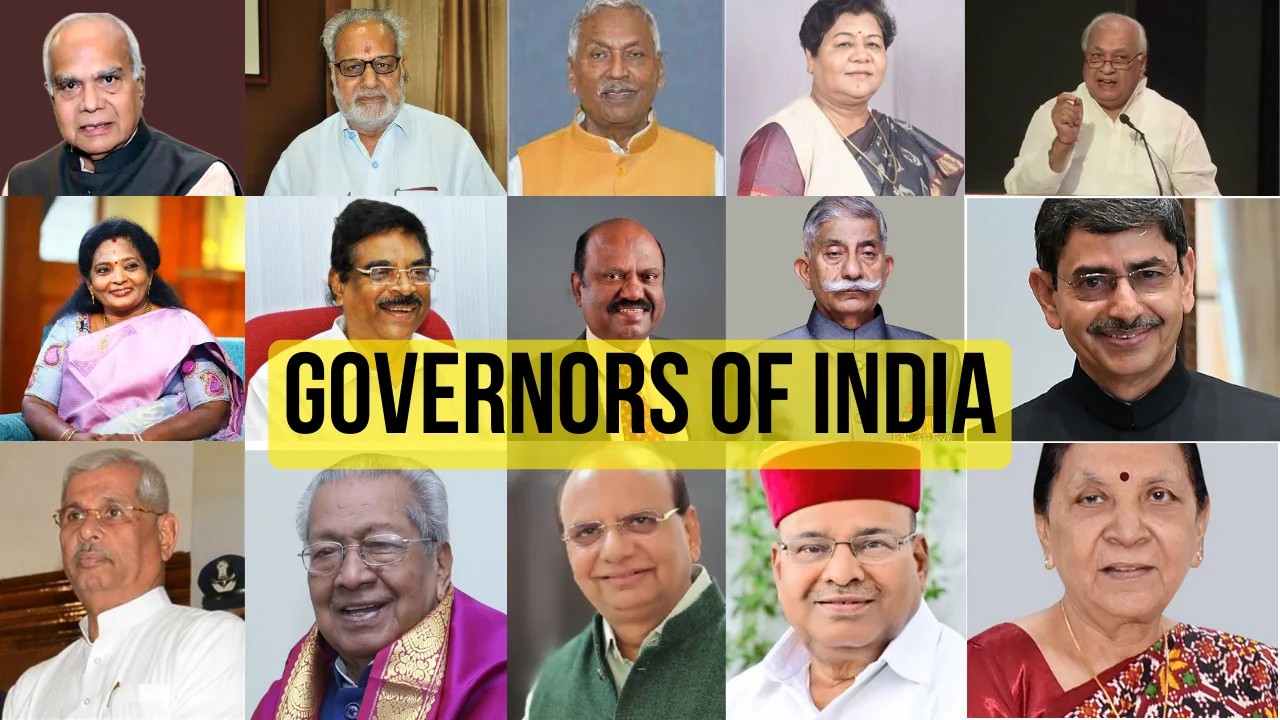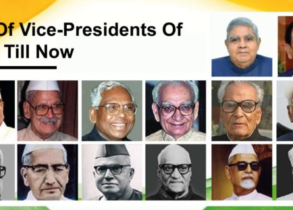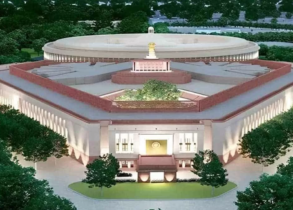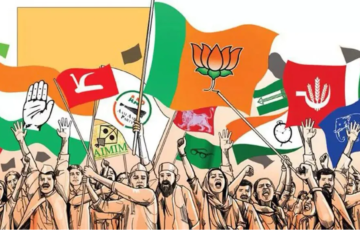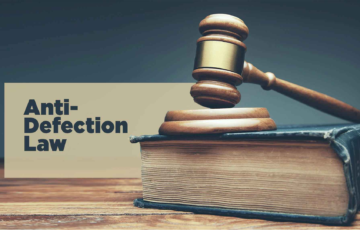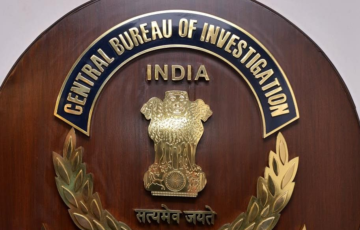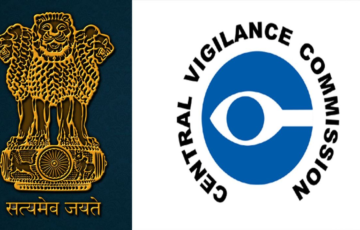GOVERNOR
- The Indian Constitution follows a parliamentary system of government in the states, similar to the central government. Part VI of the Constitution is dedicated to state government, with Articles 153 to 167 addressing the state executive. This state executive comprises the governor, the chief minister, the council of ministers, and the advocate general of the state. It’s important to note that there is no equivalent position of a vice-governor at the state level, analogous to the Vice-President at the national level.
- The governor holds the position of the chief executive in the state, but, much like the President at the national level, the governor is a nominal or constitutional head of the state. Furthermore, the governor also acts as an agent of the central government, thus fulfilling a dual role within the state’s administrative framework.
- Typically, each state has its own governor, but the 7th Constitutional Amendment Act of 1956 introduced the provision for the same individual to serve as the governor for two or more states, streamlining the administrative process.
Appointment of the Governor
- Article 165 of the Indian Constitution empowers and authorizes the President of India to appoint the Governor of a State through a formal warrant issued under the President’s hand and seal, and this appointment holds for a five-year term.
- It’s important to note that the Governor is not chosen through a direct election by the people of the state, nor is the appointment an outcome of an indirect election by a specialized electoral college. Instead, the Governor is appointed directly by the President and serves at the President’s discretion.
- The swearing-in of the Governor is a solemn procedure, where the Chief Justice of the concerned High Court conducts the oath of office. In the event that the Chief Justice is unavailable, the duty falls to the senior-most judge of the High Court, ensuring the proper commencement of the Governor’s term.
Qualifications of the Governor
- The Indian Constitution lays down two fundamental qualifications for the selection of a Governor:
- Indian Citizenship: The individual must be an Indian citizen to hold the position of a Governor.
- Minimum Age Requirement: The Constitution mandates that a person must be at least 35 years of age to be eligible for the Governor’s office.
- Over time, certain conventions have evolved in the selection process of Governors, even though these are not constitutionally mandated. These conventions include:
- Outsider Status: It has been a conventional practice to appoint an “outsider” who does not currently reside in the state for which they are being appointed as Governor. This practice is intended to ensure that the Governor does not have strong local political affiliations or interests that might influence their decisions as an impartial constitutional head. Example: In the past, Governors have been appointed to states where they did not have a prior residence or political history, reinforcing the convention of having an “outsider” Governor.
- Consultation with the Chief Minister: While not a strict constitutional requirement, there is a convention that the President, when appointing a Governor for a state, should consult with the state’s Chief Minister. This is seen as a means to promote cooperative federalism and maintain harmonious relations between the state government and the Governor. Example: In most cases, Presidents have followed the convention of consulting with the Chief Minister of the concerned state, thus facilitating a collaborative approach in the selection of Governors.
- However, it is worth noting that these conventions have been violated on occasion, with Governors being appointed from within the state or without consulting the Chief Minister. Such instances have sometimes led to political controversies and debates regarding the federal nature of Indian governance.
| Lieutenant Governor |
|
Term of Office
- Governors in India serve for a term of five years from the date they assume office. This term is typically fixed, but it is subject to the President’s pleasure, which means that the President can, in certain circumstances, remove a Governor before the completion of the full five-year term.
- Reappointment: Governors whose terms have expired may indeed be reappointed, either in the same state or a different state. Reappointment is at the discretion of the President and the Central Government.
- Transfer of Governors: The President does have the authority to transfer a Governor from one state to another for the remainder of their tenure. Such transfers are made based on the President’s judgment and the recommendations of the Central Government. This transfer is a relatively common practice and can occur for various reasons, including administrative or political considerations.
- Serving Beyond the Five-Year Term: Governors can serve over their five-year term until a new appointment is made. If a new Governor is not appointed when the current Governor’s term expires, the incumbent Governor may continue in office until a successor is appointed.
Conditions
- The conditions of the office of the Governor in India are outlined in the Indian Constitution, and the information you provided accurately reflects some of the key conditions and privileges. Here’s a more detailed explanation:
- Cannot Occupy Office of Profit: The Governor should not hold any office of profit under the Government of India or the Government of any state. This restriction is in place to ensure that the Governor can carry out their constitutional duties without any conflicting interests.
- Cannot Be a Member of Parliament or State Legislature: The Governor cannot be a member of either the House of Parliament (Lok Sabha or Rajya Sabha) or any State Legislature (Legislative Assembly or Legislative Council) during their term as Governor. This is to maintain the separation of powers and to ensure the Governor’s impartiality.
- Entitlement to Allowances, Emoluments, and Privileges: The Governor is entitled to receive allowances, emoluments, and privileges as determined by Parliament. These allowances and privileges are specified in the rules and regulations governing the terms and conditions of Governors.
- Protection of Emoluments and Allowances: During the Governor’s tenure of office, their emoluments and allowances cannot be reduced. This is to ensure the financial security and independence of the Governor while in office.
- Division of Allowances and Emoluments: If a person is appointed as the Governor of two or more states, the allowances and emoluments are divided among the states in a proportion specified by the President. The division is typically based on the number of states and the responsibilities associated with each appointment.
- Use of Raj Bhawan as Official Residence: The Governor is entitled to utilize Raj Bhawan (the Governor’s official residence) without having to pay rent. This official residence serves as the Governor’s place of residence and for hosting various official functions and guests.
Removal
- Grounds for Removal: The Indian Constitution does not specify the grounds for a Governor’s removal. The phrase “at the pleasure of the President” implies that a Governor can be removed for any reason or without specifying a reason. The removal is a prerogative power of the President.
- Resignation: A Governor can also resign from their office by submitting a resignation letter to the President. The resignation is typically accepted by the President, and the Governor’s tenure comes to an end.
Constitutional Position
- Mandate for Appointment of Governors: Article 153 of the Indian Constitution mandates the appointment of a Governor in each state. The Governor is the constitutional head of the state and represents the President at the state level.
- Appointment of the Same Person as Governor of Two or More States: The 7th Amendment to the Indian Constitution allows for the appointment of the same person as the Governor of two or more states. This provision can be invoked in certain circumstances where the President deems it appropriate, typically for reasons such as the consolidation of smaller states or for administrative convenience.
- Executive Powers of the Governor (Article 154): Article 154 of the Indian Constitution confers executive power on the Governor, and the Governor exercises this power either directly or through officers subordinate to them. However, this exercise of power is subject to conformity with the Constitution and the aid and advice of the Council of Ministers, except in cases where the Governor is compelled to act at their discretion.
- Council of Ministers’ Role (Article 163): Article 163 of the Constitution establishes the role of a Council of Ministers led by the Chief Minister. This council is responsible for assisting and advising the Governor in the exercise of their powers. The Governor is expected to act on the advice of the Council of Ministers, except in cases where they must exercise their functions at their discretion.
- Collective Responsibility (Article 164): Article 164 of the Constitution establishes the principle of collective responsibility. It states that the Council of Ministers is collectively responsible to the legislative assembly of the state. This means that the Council of Ministers, headed by the Chief Minister, is accountable to the state’s legislative assembly for its actions and decisions.
| The Supreme Court’s ruling in the B. P. Singhal case in 2010 clarified that while the Governor’s office is independent, the central government has the authority to remove Governors of various states. However, this authority should be exercised within the bounds of the Constitution and not in an arbitrary, unreasonable, or bad faith manner. This decision reinforced the constitutional principles and limitations on the central government’s role in appointing and removing Governors. |
Power and Functions of Governor
Executive
- Executive Decisions: The Governor does not make all executive decisions on behalf of the state government. While the Governor has executive powers, these powers are exercised in accordance with the advice of the Council of Ministers. The Governor’s role is largely ceremonial, and the real executive authority lies with the Council of Ministers.
- Appointment of Chief Minister and Cabinet Members: The Governor appoints the Chief Minister, who is usually the leader of the majority party in the state’s legislative assembly. The Chief Minister, in turn, recommends other cabinet members (ministers) to the Governor, and they serve at the pleasure of the Governor.
- Rules for Efficient Execution: The Governor may create rules for the allocation and transaction of the state government’s business, but these rules are typically made on the advice of the Council of Ministers and are subject to constitutional provisions.
- Appointment of Advocate General: The Governor does appoint the state’s Advocate General, but the Advocate General’s tenure and conditions of service are typically determined by the Governor in consultation with the state government.
- Recommendation for Constitutional Emergency: The Governor has the authority to recommend to the President the imposition of President’s Rule in a state if the constitutional machinery has broken down. However, this recommendation is typically made on the advice of the Council of Ministers.
- Request for Information and Legislative Suggestions: The Governor may indeed request information from the Chief Minister regarding the administration of state affairs. However, legislative suggestions and decisions are typically made by the Council of Ministers, not the Governor.
- Appointment of State Election Commissioner: The appointment and tenure of the State Election Commissioner are governed by specific laws and rules in the state. The Governor may have a role in the appointment process, but it is not solely within the Governor’s authority.
- Appointment of Chairperson and Members of Public Service Commission: The appointment of the Chairperson and Members of the State Public Service Commission is made by the President of India, not by the Governor.
- Chancellor of State Universities: The Governor of a state typically serves as the Chancellor of state universities and may have certain ceremonial roles in that capacity. However, the day-to-day administration of universities is the responsibility of the respective Vice-Chancellors and university authorities.
Administration of Scheduled Areas
- Declaration of Scheduled Areas: The President of India has the authority to declare an area as a Scheduled Area under the Fifth Schedule of the Indian Constitution. Scheduled Areas are primarily inhabited by indigenous tribal communities, and this special provision is made to protect their interests.
- Governor’s Role in Administration: The Governor of the state plays a crucial role in the administration of Scheduled Areas. The Governor is required to submit a report to the President on the administration of these areas, which includes details on the implementation of protective and developmental measures.
- Applicability of Laws: The Governor, after consulting with the Tribes Advisory Council, has the authority to decide whether any particular law passed by the state legislature or Parliament should be applicable to the Scheduled Areas or not. If a law is applicable, the Governor can also determine whether it should be applied without modifications or with specific modifications to better suit the needs and customs of the tribal communities.
- Rules for Peace and Good Government: The Governor, with the advice of the Tribes Advisory Council, has the power to make regulations for the peace and good government of the Scheduled Areas. These regulations may be related to land rights, law and order, and other matters relevant to the welfare and protection of the tribal communities in those areas.
Administration of State During President’s Rule or a State Emergency
- Article 356: This article of the Indian Constitution provides the President with the authority to issue a proclamation if they believe that a situation has developed in which the state government cannot function in conformity with the provisions of the Constitution. This is commonly referred to as “President’s Rule.” It is imposed when there is a breakdown of constitutional machinery in a state, and the Governor’s normal powers are inadequate to address the situation. The Governor acts on the advice of the Central Government in such cases.
- Article 365: Article 365 empowers the President to take action when a state government fails to comply with or give effect to any directions or instructions from the Center. If a state government does not follow the directions issued by the Central Government, the President may conclude that a situation has developed in which the state’s administration cannot be carried on in line with the provisions of the Constitution.
- After the imposition of President’s Rule or State Emergency, the following changes in the administration occurs:
- The Governor administers the state on behalf of the President. The Governor’s role in this context is significantly expanded, and they have the authority to exercise executive powers directly.
- The Governor is usually aided by the Chief Secretary or advisors appointed by the President to assist in the administration of the state during this period.
- The state legislative assembly may be either dissolved or placed under suspension, and the state is governed directly by the President through the Governor until normalcy is restored.
- The imposition of President’s Rule is considered a last resort, and it is meant to be a temporary measure until the constitutional machinery in the state is restored. It is a significant step to ensure that the state’s administration remains in accordance with the Indian Constitution when normal governance has broken down.
Legislative Powers
- Calling and Dissolution of State Legislature: The Governor has the authority to call and dissolve the state legislature on the advice of the Chief Minister and the state’s ministerial council. The dissolution of the legislative assembly may lead to the conduct of fresh elections.
- Presentation of Reports: The Governor is responsible for presenting various reports to the state legislature. These reports include those of the State Finance Commission, the State Public Service Commission, and the reports of the Comptroller and Auditor General of India, which provide information on the state’s financial and administrative matters.
- Appointment of Members to State Legislative Council: The Governor appoints one-sixth of the members of the State Legislative Council from among individuals with exceptional knowledge or experience in various fields like science, literature, social service, or the cooperative movement. This provision is outlined in Article 171(5) of the Indian Constitution.
- Addressing the State Legislature: The Governor addresses the state legislature at the beginning of its first session and the first session of each year. The Governor’s address outlines the government’s policies and priorities for the state.
- Joint Session and Messages: The Governor has the authority to address both Houses of the state legislature in a joint session (if the state has a bicameral legislature), and the Governor may also deliver messages to one or both Houses.
- Presiding Over Proceedings: In the event that the offices of the Speaker and Deputy Speaker of the state legislative assembly become vacant, the Governor may designate a member of the legislative assembly to preside over its proceedings until a new Speaker or Deputy Speaker is elected.
- Disqualification of Members: In conjunction with the Election Commission, the Governor has the authority to rule on the disqualification of members of the state legislature. This power is used when questions arise regarding the eligibility of a member to continue in the legislature.
- Promulgation of Ordinances: When the state legislature is not in session, the Governor has the authority to issue ordinances to address urgent matters. These ordinances must be approved by the legislature within six weeks of their promulgation. The Governor also has the power to revoke an ordinance at any time.
Financial Powers
- Approval for Money Bills: In most Indian states, money bills, which deal with matters related to taxation, public expenditure, and other financial matters, cannot be introduced in the State Legislative Assembly without the prior approval of the Governor. This ensures that the Governor is aware of and has consented to financial proposals before they are enacted into law.
- State Contingency Fund: The Governor is indeed in charge of the State Contingency Fund, which is established under Article 267 of the Indian Constitution. The fund is used to cover unforeseen and urgent expenses for which no other provision exists. The Governor can make advances from this fund, but these advances are subject to subsequent approval by the state legislature.
- Recommendation for Grants: No grants can be made from the state’s consolidated fund unless the Governor has recommended them. The Governor plays a vital role in the budgetary process by making these recommendations based on the advice of the Council of Ministers.
- Submission of Annual Financial Statement: The annual financial statement, which includes the state budget, is submitted before the State Legislative Assembly under the supervision of the Governor. This statement outlines the government’s revenue and expenditure for the upcoming fiscal year.
- Appointment of State Finance Commission: The Governor appoints the State Finance Commission, typically for a five-year term. The commission’s primary function is to examine the financial conditions of municipalities and Panchayats (local self-government bodies) in the state and make recommendations for the distribution of financial resources among them. This process is guided by Article 243(1) of the Indian Constitution.
Judicial Powers
- Pardons and Clemency Powers (Article 161): Article 161 of the Indian Constitution grants the Governor the authority to grant pardons, reprieves, respites, or remission of sentences or to suspend, remit, or commute the sentences of individuals who have been convicted of offenses against any law related to matters within the executive jurisdiction of the state. The Governor’s power in this regard is discretionary and can be exercised to show leniency, reduce sentences, or correct perceived injustices.
- However, it’s important to note that the Governor cannot commute a death sentence without first obtaining the approval of the President of India. In cases involving death sentences, the recommendation for clemency is sent to the President for consideration, and the President makes the final decision.
- Appointment, Posting, and Promotion of District Judges: The Governor, in consultation with the state’s High Court, has the authority to appoint, post, and promote District Judges in the state. This power is exercised to ensure the effective functioning of the judicial system at the district level. The Governor typically acts on the advice and recommendations of the High Court in these matters.
- Consultation with the Governor on High Court Appointments: Before appointing the Chief Justice and other Judges of a state’s High Court, the President of India is required to consult the Governor of the relevant state. This consultation process helps ensure the appointment of judges with local knowledge and expertise and promotes cooperation between the state and central governments in the appointment of high court judges.
| Limitations of the Pardoning Power of Governor |
|
Discretionary Powers
- Reserving a State Law for the President’s Assent (Article 200): The Governor does have the discretionary power to reserve a bill passed by the state legislative assembly for the President’s assent. This can happen when a law passed by the state is deemed to be in conflict with the Constitution, and the Governor believes it should be examined by the President.
- Determining Royalty on Mineral Development Licenses for Tribal District Councils: The Governor, in certain states like Assam, Meghalaya, Mizoram, and Tripura, does have a role in determining the amount of money payable by the tribal government to autonomous Tribal District Councils as royalty on mineral development licenses. This authority is exercised to promote the interests of the tribal communities.
- Declining to Sign a Regular Bill: The Governor has the discretionary power to decline to sign a regular bill passed by the state legislature if the Governor believes the bill is unconstitutional or otherwise not in accordance with the law.
- Nomination of Chief Minister in Case of No Clear Majority: If no political party has a clear majority in the state legislative assembly, the Governor may indeed have the authority to nominate a person as the Chief Minister. However, this discretion is typically exercised in situations where no party or coalition has a clear majority, and the Governor seeks to appoint a leader who can demonstrate majority support in the legislative assembly.
- Recommendation of Constitutional Emergency (Article 356): The Governor has the authority to recommend to the President the imposition of a constitutional emergency (President’s Rule) in a state under Article 356 of the Indian Constitution. This recommendation is made when there is a breakdown of constitutional machinery in the state.
- Additional Charge as Administrator of Union Territory: In cases where a Governor is given the additional charge of administering a neighboring Union territory, the Governor can act with discretion in that capacity.
- Seeking Information from the Chief Minister: The Governor can indeed seek information from the Chief Minister on state administrative and legislative matters. This communication helps the Governor in their role as the head of the state and ensures coordination between the state government and the constitutional head of the state.
- Removal of Council of Ministers: The Governor has the authority to remove the council of ministers when they cannot prove their confidence in the state legislative assembly. This is usually done in situations where the council of ministers has lost majority support in the assembly.
| Some Special Task Assigned to Governor of some states |
To address the unique circumstances, historical and demographic factors, and developmental needs of various states, the Governors in these states are entrusted with special responsibilities to ensure the well-being, development, and governance of these regions.
|
Veto Power
- Veto Power of the Governor on Money Bills:
- Introduction and Recommendation: Money bills must be introduced in the legislative assembly (the lower house) of the state legislature. Before introducing a money bill, the Governor’s prior recommendation is required. This means the Governor has the authority to either give or withhold their recommendation for the introduction of a money bill.
- Suspensive Veto: The Governor has a suspensive veto on money bills. This means they can either approve the bill or withhold their assent, but they cannot return the money bill for reconsideration. The Governor’s assent is usually a formality when it comes to money bills.
- Timeframe for Assent: The Governor is required to give their assent to a money bill within 14 days of receiving it. If the Governor neither assents nor returns the bill within this period, it is deemed to have been approved.
- Veto Power of the Governor on Ordinary Bills:
- Introduction: Ordinary bills can be introduced in either house of the state legislature, i.e., the legislative assembly (the lower house) and the legislative council (if applicable).
- Threefold Veto Powers: The Governor has three options when it comes to ordinary bills:
- Assent: The Governor can approve the bill, in which case it becomes law.
- Return for Reconsideration: The Governor can return the bill to the state legislature for reconsideration, along with a request for specific amendments or clarifications.
- Withhold Assent: The Governor can choose to withhold their assent, effectively vetoing the bill.
- Timeframe for Decision: The Governor typically has six weeks to exercise these veto powers on ordinary bills. If the Governor neither assents nor returns the bill within this period, it is deemed to have been approved.
- Role of Legislative Council (if applicable): In states with a legislative council (the upper house), the council has the authority to suggest amendments to ordinary bills. However, if the legislative assembly rejects these amendments, the bill can still be sent to the Governor for approval.
Immunities Enjoyed by the governor
- Immunity from Criminal Proceedings (Article 361(2)): The Governor of a state is granted immunity from criminal proceedings during their full term of office. This means that no criminal case or charges can be brought against the Governor in any court while they are in office. This protection is intended to ensure that the Governor can perform their duties without the distraction or hindrance of criminal cases.
- Protection from Arrest (Article 361(3)): Article 361(3) of the Indian Constitution stipulates that no court has the authority to issue an arrest warrant for the Governor. This provision reinforces the immunity from criminal proceedings and serves as a safeguard against any attempt to arrest the Governor during their term in office.
- Immunity from Personal Accountability (Article 361(1)): Article 361(1) states that during their tenure of office, the Governor is not personally accountable or answerable to any court for the exercise and performance of their powers and duties. This immunity is aimed at protecting the Governor from legal actions related to their official functions.
- Civil Procedures with Notice (Article 361(4)): While the Governor enjoys immunity from personal accountability for their official acts, civil procedures may be initiated against the Governor during their term of office. However, this can only be done after giving two months’ notice. This provision allows for civil actions to be taken against the Governor, but it ensures that they are given notice and time to respond to any civil matters.
| Instances of breaches on the Governor’s Constitutional Immunity |
|
UPSC PREVIOUS YEAR QUESTIONS
1. Which one of the following statements is correct? (2013)
(a) In India, the same person cannot be appointed as Governor for two or more States at the same time.
(b) The Judges of the High Court of the States in India are appointed by the Governor of the State just as the Judges of the Supreme Court are appointed by the President.
(c) No procedure has been laid down in the Constitution of India for the removal of a Governor from his/her post.
(d) In the case of a Union Territory having a legislative setup, the Chief Minister is appointed by the Lt. Governor on the basis of majority support.
2. Which of the following are the discretionary powers given to the Governor of a State? (2014)
1. Sending a report to the President of India for imposing the President’s rule
2. Appointing the Ministers
3. Reserving certain bills passed by the State Legislature for consideration of the President of India
4. Making the rules to conduct the business of the State Government
Select the correct answer using the code given below:
(a) 1 and 2 only
(b) 1 and 3 only
(c) 2, 3 and 4 only
(d) 1, 2, 3 and 4
3. Consider the following statements: (2016)
1. The Chief Secretary in a State is appointed by the Governor of that State.
2. The Chief Secretary in a State has a fixed tenure.
Which of the statements given above is/are correct?
(a) 1 only
(b) 2 only
(c) Both 1 and 2
(d) Neither 1 nor 2
4. Consider the following statements: (2018)
1. No criminal proceedings shall be instituted against the Governor of a State in any court during his term of office.
2. The emoluments and allowances of the Governor of a State shall not be diminished during his term of office.
Which of the statements given above is/are correct?
(a) 1 only
(b) 2 only
(c) Both 1 and 2
(d) Neither 1 nor 2
5. With reference to the Legislative Assembly of a State in India, consider the following statements: (2019)
1. The Governor makes a customary address to Members of the House at the commencement of the first session of the year.
2. When a State Legislature does not have a rule on a particular matter, it follows the Lok Sabha rule on that matter.
Which of the statements given above is/are correct?
(a) 1 only
(b) 2 only
(c) Both 1 and 2
(d) Neither 1 nor 2

